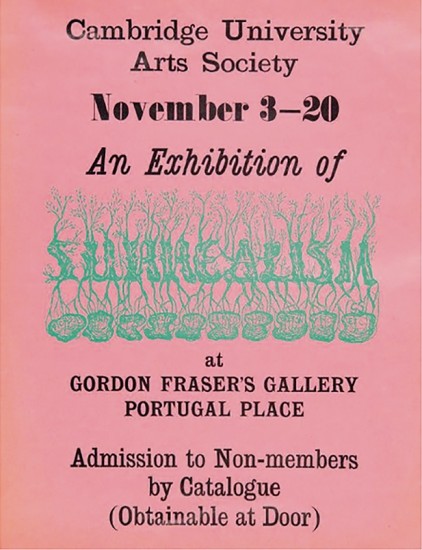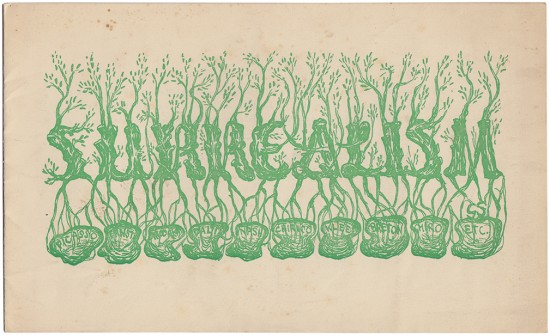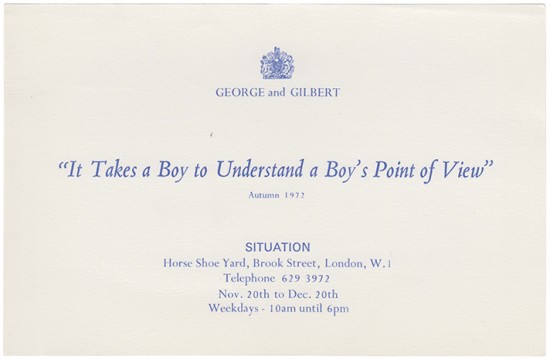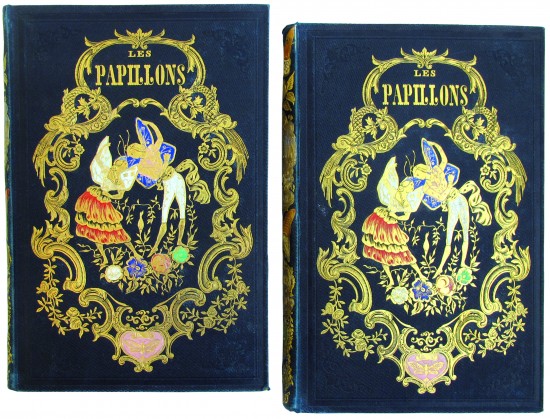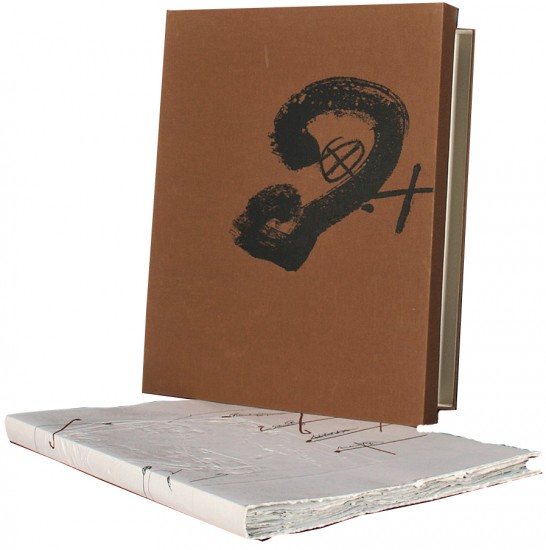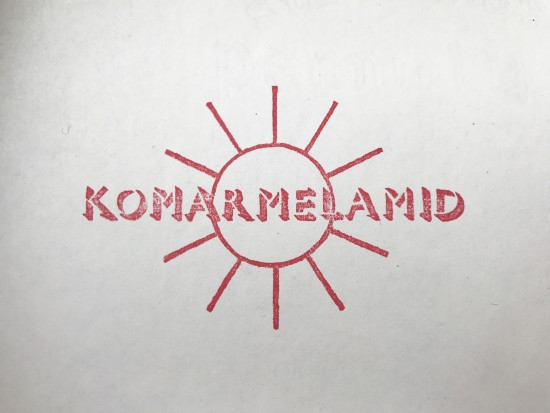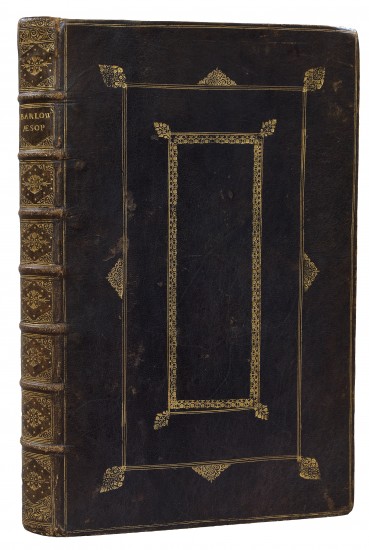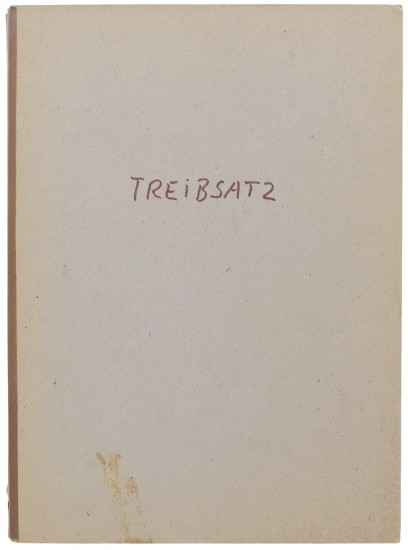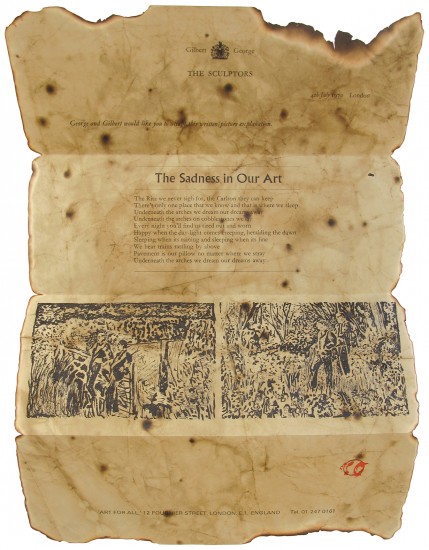An Exhibition of Surrealism, at Gordon Fraser's Gallery, Portugal Place: the Catalogue [With:] the Original Poster
Sutherland, Graham. Péret, Benjamin, Intro
Cambridge. Cambridge University Arts Society. 1937
Sold
The very scarce original catalogue together with the very rare original poster - each with a print by Graham Sutherland - for the second Surrealist exhibition to be held in England, in Cambridge, in 1937.
One year after the landmark International Surrealist Exhibition in London held at the New Burlington Galleries in 1936, a further exhibition of Surrealism took place, this time in Cambridge, under the aegis of the Cambridge University Arts Society with the assistance of Roland Penrose. This was mounted at the Gordon Fraser Gallery, Portugal Place, and ran from the 3rd until the 20th of November, 1937. The preface to the exhibition catalogue was written by Benjamin Péret (see below) and work by a number of Surrelaists and associates was exhibited.
The exhibitors were predominantly those one would associate with an exhibition of Surrealism with an international flavour, the pantheon of Parisian Surrealism: Arp, Breton, Dali, Duchamp, Eluard, Ernst, Hayter, Paul Klee, René Magritte, Masson, Joan Miró, Wolfgang Paalen, Picasso, Man Ray, Yves Tanguy, all largely exhibiting drawings and paintings; Breton contributed an 'Object Poème', Paul Eluard, the collage 'Modern Times' and Alberto Giacometti the sculpture 'Objet sans Base'. A large number of English and British Surrealists - although the term 'Surrealist' must be used rather more loosely in the context - also contributed, including Edward Burra, J. Cant, P. Norman Dawson, Merlyn Evans, Ruben Mednikoff, E. T. L. Mesens, Grace Palethorpe, Roland Penrose, Ceri RIchards, Julian Trevelyan and John Tunnard; in addition Henry Moore contributed sculpture ('Composition (reinforced concrete)' and 'Carving (Ancaster stone)'), Paul Nash the objects 'Only Egg', 'The Nest of WIld Stones' and 'Long-gom-pa' and Eileen Agar the object 'Le Père Ubu'. Mesens lent work by De Chirico, Man Ray, Ernst and Magritte and showed his own collage, 'L'lnstruction Obligatoire 1'.
Graham Sutherland's design for the cover of the catalogue, a green lithograph of the word 'SURREALISM' composed of tree trunks (the letters) with uplifted sprouting branches and each nourished by an entwined root system where the names of the exhibiting artists are visible: 'Picasso, Ernst, Moore, Dalí, Nash, de Chirico, Klee, Breton, Miró etc.'; Sutherland has initialled his composition 'GS' at lower right beneath the final 'M'. The poster, a sheet of pink paper with text - the details of the exhibition - in black, is also dominated by Sutherland's design, printed in a darker green but of equal size to the catalogue.
Sutherland's organic Surrealist form dates from the period just after his tentative association with the London Group, many of whom exhibited in the present exhibition, and from the time, 1935, when he had begun to teach Composition and Book Illustration at the Chelsea School of Art. It was also at this time that he began to experiment with lithography and to receive important commissions for posters, from London Transport, the Shell Company and from the Orient Line. Although never a Surrealist himself, Sutherland, as can be seen below, felt its reach and this work bridges an important gap between his early printmaking (he abandoned it almost entirely until the 1950s) and his later rediscovery of joy in the medium.
'Surrealism helped me to realise that forms which interested me existed already in nature, and were waiting for me to find them.' (Sutherland in 1966 interviewed by Andrew Causey 'Graham Sutherland Explains His Art').
'During those years in which the Surrealists, their movement then at its height, were trying to obtain fantastic haunting images from a technique based on the liberation of the subconscious but with the assistance of the intellect, Sutherland, quite uninfluenced by either the movement or its methods, was already demonstrating his ability to create images of mystery and dramatic suspense, images that convey a hidden inner truth of their own, without ignoring visual reality or abandoning nature.' (Roberto Tassi).
'Not a rainbow bat appears above the grasses sprouting like full moons from a world like a shop selling off Arab carpets ... Further off, a factory explodes like a pine cone which scatters its exasperated workers like pieces of mica ... For the queen has disguised myself by making herself a mustache from pieces of the true cross. It might well be a sandwich. But on rising the sun shaves itself with an old shoe, which sings the 'Jeune garde', amid a chorus of broken windows all along a building and allows us to read through the holes: 'SURREALIST EXHIBITION'.' (Benjamin Péret).
The catalogue of the exhibition is of considerable rarity and we can locate only the copies held at the National Art Library (V & A) and the Tate in the UK as well as a copy at the Zentrum Paul Klee; the poster appears to be even rarer and we can locate no other examples.
One year after the landmark International Surrealist Exhibition in London held at the New Burlington Galleries in 1936, a further exhibition of Surrealism took place, this time in Cambridge, under the aegis of the Cambridge University Arts Society with the assistance of Roland Penrose. This was mounted at the Gordon Fraser Gallery, Portugal Place, and ran from the 3rd until the 20th of November, 1937. The preface to the exhibition catalogue was written by Benjamin Péret (see below) and work by a number of Surrelaists and associates was exhibited.
The exhibitors were predominantly those one would associate with an exhibition of Surrealism with an international flavour, the pantheon of Parisian Surrealism: Arp, Breton, Dali, Duchamp, Eluard, Ernst, Hayter, Paul Klee, René Magritte, Masson, Joan Miró, Wolfgang Paalen, Picasso, Man Ray, Yves Tanguy, all largely exhibiting drawings and paintings; Breton contributed an 'Object Poème', Paul Eluard, the collage 'Modern Times' and Alberto Giacometti the sculpture 'Objet sans Base'. A large number of English and British Surrealists - although the term 'Surrealist' must be used rather more loosely in the context - also contributed, including Edward Burra, J. Cant, P. Norman Dawson, Merlyn Evans, Ruben Mednikoff, E. T. L. Mesens, Grace Palethorpe, Roland Penrose, Ceri RIchards, Julian Trevelyan and John Tunnard; in addition Henry Moore contributed sculpture ('Composition (reinforced concrete)' and 'Carving (Ancaster stone)'), Paul Nash the objects 'Only Egg', 'The Nest of WIld Stones' and 'Long-gom-pa' and Eileen Agar the object 'Le Père Ubu'. Mesens lent work by De Chirico, Man Ray, Ernst and Magritte and showed his own collage, 'L'lnstruction Obligatoire 1'.
Graham Sutherland's design for the cover of the catalogue, a green lithograph of the word 'SURREALISM' composed of tree trunks (the letters) with uplifted sprouting branches and each nourished by an entwined root system where the names of the exhibiting artists are visible: 'Picasso, Ernst, Moore, Dalí, Nash, de Chirico, Klee, Breton, Miró etc.'; Sutherland has initialled his composition 'GS' at lower right beneath the final 'M'. The poster, a sheet of pink paper with text - the details of the exhibition - in black, is also dominated by Sutherland's design, printed in a darker green but of equal size to the catalogue.
Sutherland's organic Surrealist form dates from the period just after his tentative association with the London Group, many of whom exhibited in the present exhibition, and from the time, 1935, when he had begun to teach Composition and Book Illustration at the Chelsea School of Art. It was also at this time that he began to experiment with lithography and to receive important commissions for posters, from London Transport, the Shell Company and from the Orient Line. Although never a Surrealist himself, Sutherland, as can be seen below, felt its reach and this work bridges an important gap between his early printmaking (he abandoned it almost entirely until the 1950s) and his later rediscovery of joy in the medium.
'Surrealism helped me to realise that forms which interested me existed already in nature, and were waiting for me to find them.' (Sutherland in 1966 interviewed by Andrew Causey 'Graham Sutherland Explains His Art').
'During those years in which the Surrealists, their movement then at its height, were trying to obtain fantastic haunting images from a technique based on the liberation of the subconscious but with the assistance of the intellect, Sutherland, quite uninfluenced by either the movement or its methods, was already demonstrating his ability to create images of mystery and dramatic suspense, images that convey a hidden inner truth of their own, without ignoring visual reality or abandoning nature.' (Roberto Tassi).
'Not a rainbow bat appears above the grasses sprouting like full moons from a world like a shop selling off Arab carpets ... Further off, a factory explodes like a pine cone which scatters its exasperated workers like pieces of mica ... For the queen has disguised myself by making herself a mustache from pieces of the true cross. It might well be a sandwich. But on rising the sun shaves itself with an old shoe, which sings the 'Jeune garde', amid a chorus of broken windows all along a building and allows us to read through the holes: 'SURREALIST EXHIBITION'.' (Benjamin Péret).
The catalogue of the exhibition is of considerable rarity and we can locate only the copies held at the National Art Library (V & A) and the Tate in the UK as well as a copy at the Zentrum Paul Klee; the poster appears to be even rarer and we can locate no other examples.
[4 unnumbered leaves of cream paper; large sheet of pink paper]. Oblong 8vo. (154 x 253 mm) + Folio. (380 x 282 mm). Leaf with pictorial colour lithograph title by Graham Sutherland, credits and thanks verso, leaf with 'Preface' by Benjamin Péret in English recto and verso, leaf with conclusion of Péret's text recto, list of works verso, leaf with list of works continued recto and verso, final leaf verso with exhibition location details; together with the original poster for the exhibition designed by Graham Sutherland, printed in green and black on pink paper, verso blank; sheet sizes: 154 x 253 mm (catalogue); 380 x 282 mm (poster). Original publisher's printed wrappers stitched as issued, front cover with pictorial colour lithograph title by Graham Sutherland, rear cover with list of works (Sculpture and Objects) and exhibition details; poster framed under mount.
#45531
